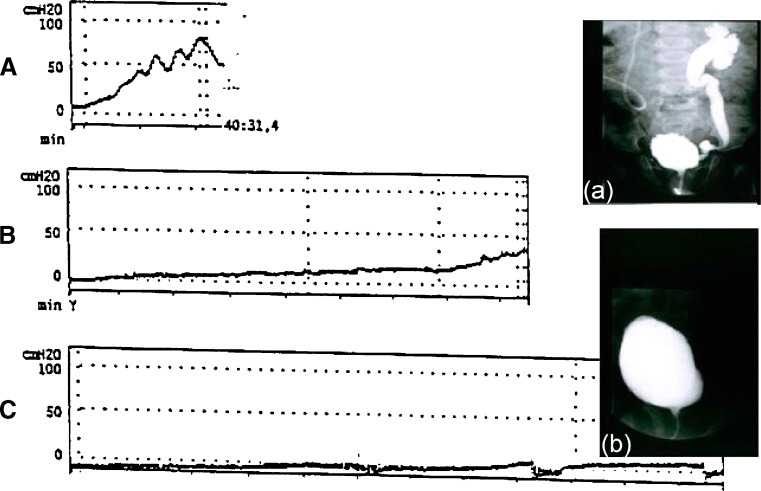Fig. 2.
Suppression of detrusor hyperactivity with resolution of reflux by nonsurgical management. Illustrative patient with high-risk neurogenic bladder sphincter dysfunction (NBSD) (type B), urodynamically showing early unsafe filling pressures (A) with high-grade reflux (a) and urosepsis before treatment. Under clean intermittent catheterization (CIC) plus oxybutynin, the unsafe high-pressure bladder was converted into a safe low-pressure reservoir with good capacity and disappearance of the reflux at control cystography 3 months later (b). Severe systemic side effects, making continuation of oral oxybutynin impossible, disappeared after switching to intravesical oxybutynin. Further urodynamic evaluations (B: after first intravesical administration; C: after 4 months) documented adequate suppression of detrusor hyperactivity (modified from [40]). Long-term (currently 13 years) continuation of CIC and intravesical oxybutynin has resulted in a safe and adequate capacity bladder with social continence for the patient

